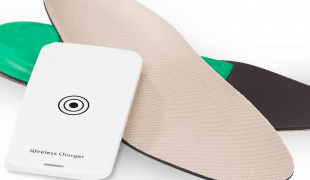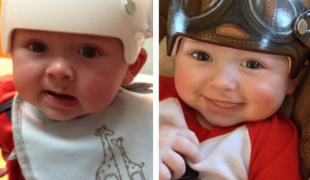- 7570
- 558
- 14
- 13
- 0
- Help Ukraine
About the solution
According to Luke, the hospital gowns were making him feel sicker. “Early on during my treatment I told my parents wearing the hospital gown made me feel even sicker. I just wanted to feel like a normal kid. With that in mind we designed a long shirt with snaps along each side for me to wear in the hospital”, Luke explained.
So, his parents had the idea of cutting up sides of his t-shirts and sewed up snap tape allowing for easy access to his port, IVs and lines. In addition to the snap tape, medical shirts are about 3 inches longer than a normal t-shirt—a similar length as the hospital gown—enabling privacy while wearing the medical shirt.
This way, almost look like the boy was wearing a normal outfit and he was also able to feel more comfortable and confident.
When he started wearing these t-shirts, other patients began asking where they could get one for themselves.
That’s when Ben and Tracy founded Luke’s FastBreaks, a nonprofit organization that supports pediatric cancer patients by providing colorful medical shirts that replace the hospital gowns.
The Luke’s FastBreaks medical shirts are MRI and X-ray safe, come in hot pink, navy, royal blue, black camouflage, purple, white and red colors. The shirts start at 3T-Toddler and go into youth sizes finishing at Adult XXL, enabling every child in the hospital to find a medical shirt that fits properly.
This nonprofit has donated thousands of shirts, and works in 20 states, 35 cities and 46 hospitals and Ronald McDonald House Charities.
Adapted from: https://bit.ly/2I4q1sG
More info: https://lukesfastbreaks.org/
https://youtu.be/9gIqW99Rba0
This solution shall not include mention to the use of drugs, chemicals or biologicals (including food); invasive devices; offensive, commercial or inherently dangerous content. This solution was not medically validated. Proceed with caution! If you have any doubts, please consult with a health professional.
DISCLAIMER: This story was written by someone who is not the author of the solution, therefore please be advised that, although it was written with the utmost respect for the innovation and the innovator, there can be some incorrect statements. If you find any errors please contact the patient Innovation team via info@patient-innovation.com
-
-
412
-
2
-
9317

SmartSole GPS - Tracker for people with Alzheimer's, dementia and autism
COMMUNICATION: Communicating, whether by speaking, listening, or other means
WALKING: Walking
CAREGIVING
Alzheimer's Disease
Dementia (Alcoholic Dementia, Vascular Dementia)
Body-Worn solutions (Clothing, accessories, shoes, sensors...)
Difficulty coordinating movements
Loss of balance
Social withdrawal or isolation
Cognitive impairment
Memory loss
Irritability or anger outbursts
Confusion
Restlessness or feeling slowed down
Anxiety
Panic attacks
Difficulty controlling impulses
Mood swings
Feelings of guilt or worthlessness
Suicidal thoughts or behaviors
Hallucinations (perceiving things that aren't there)
Dizziness or lightheadedness
Fatigue
Restoring mobility
Promoting self-management
Building Supportive Community Relationships
Promoting inclusivity and social integration
Improving Speech and Communication
Preventing (Vaccination, Protection, Falls, Research/Mapping)
Raise awareness
Caregiving Support
Child and Adolescent Psychiatry
General and Family Medicine
Internal Medicine
Medical Genetics
Neurology
Pediatrics
Psychiatry
United States
-
-
-
458
-
0
-
6869

Baby helmets turned into works of art
-
-
-
257
-
0
-
3092

Mom creates clothing line for autistics
(SELF)-CARE: DRESSING: Dressing independently.
Autism
Body-Worn solutions (Clothing, accessories, shoes, sensors...)
Anxiety
Difficulty concentrating or making decisions
Irritability or anger outbursts
Restlessness or feeling slowed down
Panic attacks
Difficulty controlling impulses
Racing thoughts
Feelings of guilt or worthlessness
Obsessive thoughts or compulsive behaviors
Hallucinations (perceiving things that aren't there)
Changes in appetite or weight
Promoting self-management
Managing Neurological Disorders
Promoting inclusivity and social integration
To improve Treatment/Therapy
Preventing (Vaccination, Protection, Falls, Research/Mapping)
Caregiving Support
Child and Adolescent Psychiatry
General and Family Medicine
Neurology
Pediatrics
United States
-
 en
en